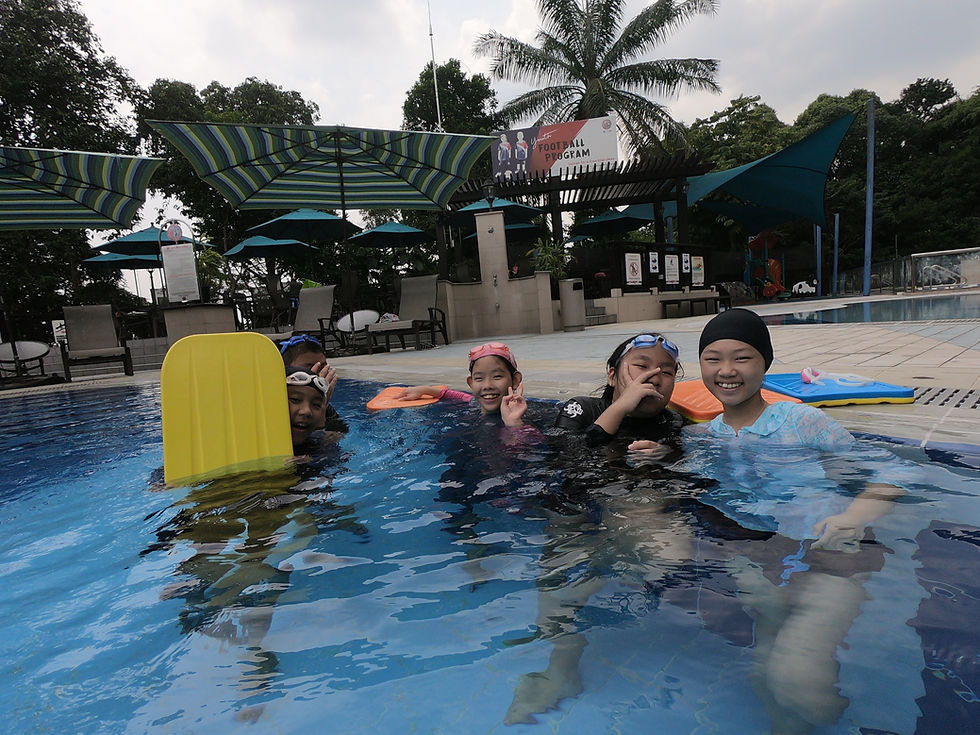The Best Cross-Training Exercises for Triathlon Swimmers
- SG Sink Or Swim

- Aug 13
- 2 min read

Triathlon swimming demands a unique blend of strength, endurance, and technique. While time in the water is essential, supplementing your swim training with the right cross-training exercises can boost performance, reduce injury risk, and give you a competitive edge. By targeting the muscles, energy systems, and movement patterns used in freestyle, you can enhance your efficiency and power in open water.
This guide covers the best cross-training exercises for triathlon swimmers, from strength work to mobility drills.
Why Cross-Training Is Important for Triathlon Swimming
Unlike pool swimmers, triathletes face unpredictable open-water challenges such as waves, currents, and mass starts. Cross-training offers several benefits:
Builds swim-specific strength for powerful pulls and kicks
Improves endurance without excessive water time
Enhances mobility for a more efficient stroke
Prevents overuse injuries through balanced muscle development
Boosts mental toughness for race-day conditions
1. Strength Training for Swim Power
Swimming is primarily an upper-body endurance sport, but it also relies on core stability and lower-body drive.
Key exercises:
Pull-ups or Lat Pulldowns – Strengthen lats for a stronger pull phase.
Dumbbell Rows – Build pulling power and shoulder stability.
Push-ups – Improve chest and tricep endurance for stroke recovery.
Plank Variations – Enhance core stability for better body alignment.
Squats & Lunges – Support kick drive and explosive race starts.
Tip: Use moderate resistance and focus on controlled, swim-specific movement patterns.
2. Resistance Band Training
Resistance bands mimic swimming motions and strengthen the muscles used in each stroke phase.
Drills to try:
Dryland Freestyle Pulls – Anchor the band at chest height, simulate your stroke pull.
Rotator Cuff Exercises – Strengthen shoulders for injury prevention.
Hip Extension Drills – Improve kick power and flexibility.
3. Cardiovascular Conditioning
A strong aerobic base helps triathletes sustain a fast pace without fatigue.
Best options for swimmers:
Cycling – Builds cardiovascular endurance with low impact on joints.
Running Intervals – Boost VO₂ max and stamina.
Rowing Machine – Engages upper and lower body while mimicking swim pull patterns.
4. Mobility and Flexibility Work
Efficient freestyle requires shoulder mobility, hip flexibility, and spinal rotation.
Essential stretches:
Shoulder dislocates with a resistance band
Cat-Cow and Thoracic Rotations for spine mobility
Hip flexor stretches to counter cycling/running tightness
5. Core-Specific Workouts
A strong core is key for holding body position in choppy water.
Core exercises for swimmers:
Hollow Body Holds
Russian Twists
Flutter Kicks
Side Planks
Cross-Training Schedule for Triathlon Swimmers
Here’s a sample weekly structure:
Day | Activity |
Monday | Swim + Core Training |
Tuesday | Cycling + Strength Training |
Wednesday | Swim + Mobility Work |
Thursday | Running + Resistance Bands |
Friday | Swim + Strength Training |
Saturday | Long Bike Ride or Open Water Swim |
Sunday | Active Recovery (yoga/stretching) |
Final Thoughts
Cross-training is not a replacement for swim practice — it’s a performance booster. By combining water sessions with targeted strength, cardio, and mobility work, triathlon swimmers can gain speed, efficiency, and endurance in open water.
Whether you’re preparing for your first sprint triathlon or tackling an Ironman, a smart cross-training plan can help you glide through the swim leg with more power and confidence.





Comments